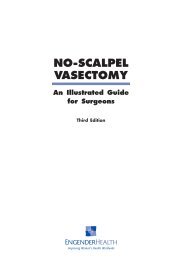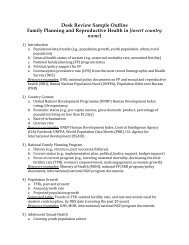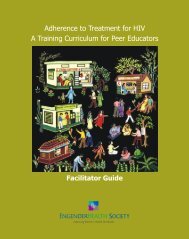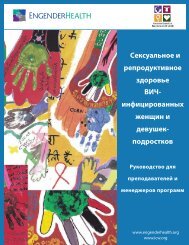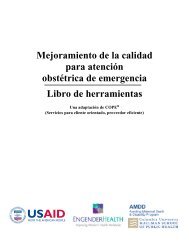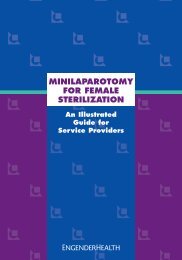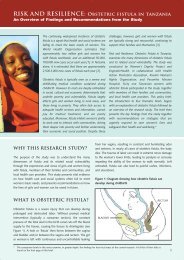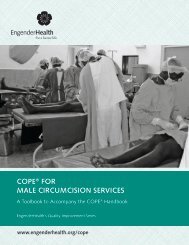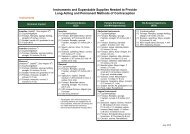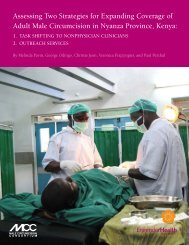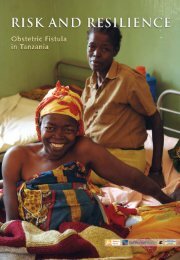Help-Seeking Pathways and Barriers for ... - EngenderHealth
Help-Seeking Pathways and Barriers for ... - EngenderHealth
Help-Seeking Pathways and Barriers for ... - EngenderHealth
Create successful ePaper yourself
Turn your PDF publications into a flip-book with our unique Google optimized e-Paper software.
Annexes<br />
Annex 1: Key Research Questions<br />
Building on the key questions listed in the scope of work provided by CHAMPION, ICRW<br />
proposes that the following research questions be explored in the field work:<br />
How do communities define GBV, <strong>and</strong> what distinctions are made between different <strong>for</strong>ms of<br />
violence (e.g., rape versus <strong>for</strong>ced sex) How do these perceptions differ among various<br />
groups<br />
<br />
<br />
<br />
How do communities respond to violence What kinds of violence are most likely to<br />
be reported What are typical help-seeking behaviors, <strong>and</strong> are there any discernible<br />
patterns of help-seeking<br />
How do communities perceive existing GBV services <strong>and</strong> what needs do they<br />
express<br />
What barriers to accessing services exist in the communities, including:<br />
social/attitudinal (e.g., stigma, acceptance of violence, restrictions to women’s<br />
mobility, etc.); logistical (e.g., distance, cost, hours of operation, etc.); <strong>and</strong><br />
in<strong>for</strong>mational (e.g., lack of awareness of services, lack of knowledge regarding the<br />
importance of services, etc.)<br />
The research questions focused on assessing the availability <strong>and</strong> quality of services <strong>for</strong><br />
survivors of violence, as well as geographic coverage, coordination among providers, <strong>and</strong><br />
monitoring ef<strong>for</strong>ts. The assessment also addressed existing gaps, promising practices, <strong>and</strong><br />
lessons learned. Specific questions included the following:<br />
<br />
<br />
<br />
<br />
What medical, legal, <strong>and</strong> psychosocial services (both <strong>for</strong>mal <strong>and</strong> in<strong>for</strong>mal) are<br />
available in the area What organizations offer services <strong>and</strong> what is provided How<br />
do users – especially women <strong>and</strong> girls – perceive the quality of these services Is<br />
any other type of services provided within the community <strong>for</strong> survivors (e.g. gender<br />
empowerment, economic support, etc.) Are they effective<br />
How do survivors access these services For example, what kind of advertising is in<br />
place Where are services located Are fees required<br />
Are there any referral systems <strong>and</strong>, if so, how are they structured How do<br />
organizations monitor their activities, including referrals (if applicable)<br />
Are there any innovative or promising practices in the implementation of GBV<br />
services What are the key challenges <strong>and</strong> lessons learned<br />
<strong>Help</strong>-<strong>Seeking</strong> <strong>Pathways</strong> <strong>and</strong> <strong>Barriers</strong> <strong>for</strong> Survivors of GBV in Tanzania March 2013<br />
Page 62



